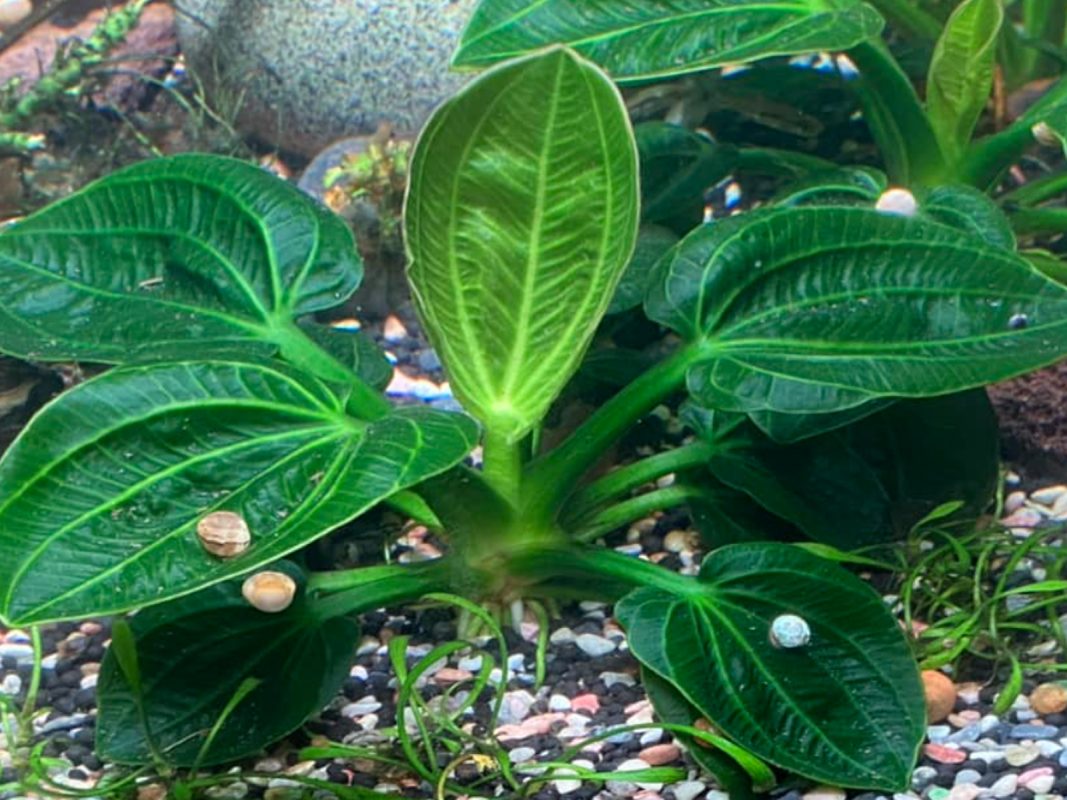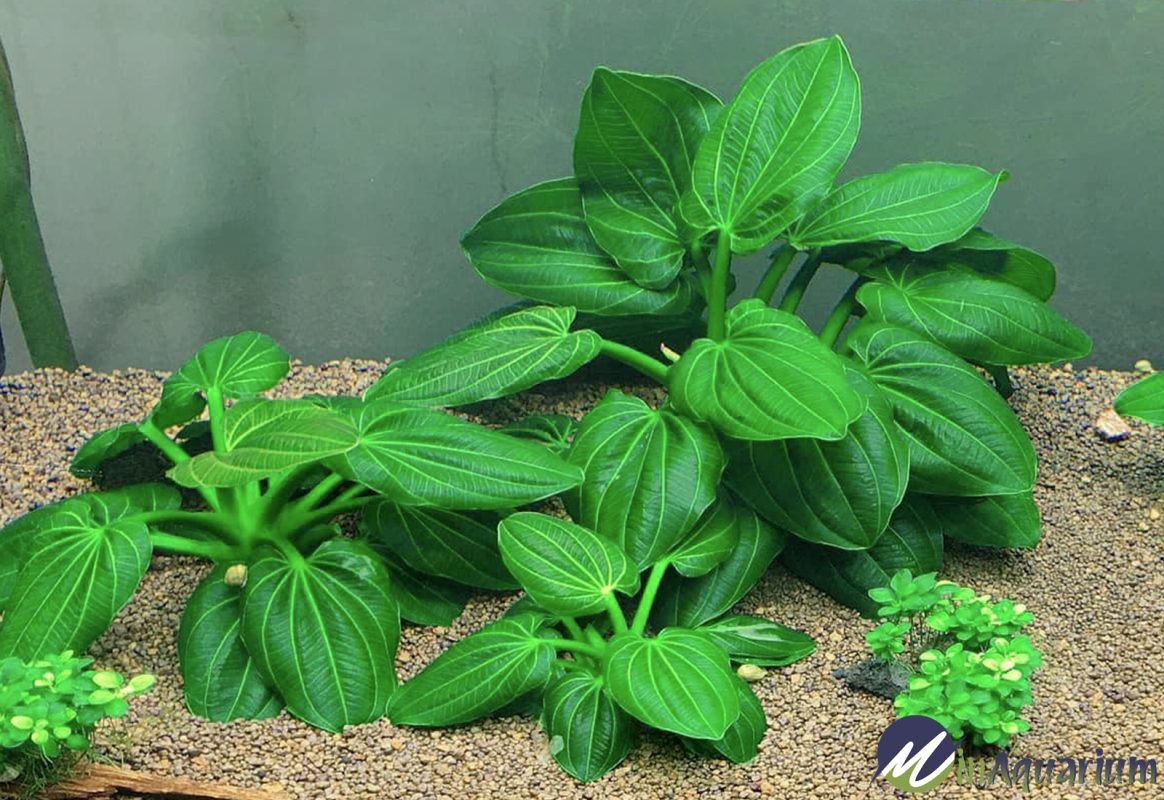Blogs
Echinodorus Iguazu 2009: A Comprehensive Guide to a Rare Aquatic Plant
In the world of aquatic plants, few species captivate the imagination and admiration of hobbyists like the Echinodorus Iguazu 2009. This rare and stunning Amazon Sword plant brings an unparalleled elegance and hardy resilience to any aquarium, making it a prized addition for both novices and seasoned aquarists alike. Renowned for its beautiful foliage and relatively low maintenance requirements, the Echinodorus Iguazu 2009 stands out not only for its aesthetic appeal but also for its interesting history and versatility in aquascaping. Introduced to the United States only a few years ago, this plant has swiftly become a sought-after gem, with prices ranging from $110 to $200 per plant due to its rarity.
What is Echinodorus Iguazu 2009?
The Echinodorus Iguazu 2009 is a member of the Echinodorus genus, which encompasses a variety of sword plants known for their robust nature and striking leaf structures. Originating from the Amazon basin, the plant gets its name from the famous Iguazu Falls, reflecting its natural heritage. Among aquarists, the Echinodorus Iguazu 2009 is admired for its elongated, lance-shaped leaves that exhibit a vibrant green hue, creating a mesmerizing texture and depth within the aquatic landscape. This particular species of Amazon Sword is known for its hardiness, making it a suitable choice for various water parameters and lighting conditions.
History and Origin
First introduced to the United States from Poland around 2009, the Echinodorus Iguazu 2009 has a fascinating history. The plant caught the attention of the aquatic plant enthusiast community due to its unique appearance and adaptability. Since its introduction, it has been propagated and cultivated extensively by dedicated hobbyists. The plant’s journey from Poland to the U.S. highlights the global nature of the aquarium hobby, where enthusiasts from different parts of the world share and grow rare species, contributing to the biodiversity and beauty of aquatic environments.
Popularity and Rarity
The Echinodorus Iguazu 2009 is one of the most desired Echinodorus species in the aquatic plant hobby. Its rarity enhances its appeal, making it a prized possession for enthusiasts who appreciate its unique combination of beauty and resilience. Given its price range from $110 to $200 per plant, it is evident that its value extends beyond mere aesthetics. The plant’s adaptability to various water conditions and its relatively low maintenance requirements make it accessible to a broader range of aquarists, from beginners to experts, further fueling its popularity.
Echinodorus Iguazu 2009 Plant Profile
- Scientific Name: Echinodorus Opacus sp. ‘Iguazu 2009’
- Family: Alismataceae
- Origin: South America (Amazon Basin)
- Growth Rate: Slow
- Size: 12-24 inches in height, 6-12 inches in width
- Light Requirements: Low to moderate
- Light Requirements: Low to moderate

Characteristics
Appearance
The striking appearance of the Echinodorus Iguazu 2009 sets it apart from other aquatic plants. Its elongated, lance-shaped leaves are adorned with prominent veins that add a textured, luxurious depth to any aquarium. The leaves’ vibrant green color infuses the tank with a touch of natural elegance, enhancing the overall aesthetic of the underwater landscape. Unlike other more common Echinodorus variants, the Iguazu 2009’s unique foliage creates a focal point and adds visual intrigue, making it an essential plant for crafting stunning aquascapes.
Care Requirements
Caring for the Echinodorus Iguazu 2009 involves understanding and providing for its specific needs. The plant thrives in a range of water parameters, with a pH level between 5.5 and 9.0, indicating its adaptability. Moderate care is recommended, including the following aspects:
- Lighting: The Echinodorus Iguazu 2009 flourishes under low to moderate lighting conditions. However, providing moderate intensity lighting will encourage optimal growth and enhance the foliage’s vibrancy.
- CO2 Injection: While not strictly necessary, supplementing the tank with CO2 can significantly boost the plant’s growth and overall health, making it more robust and flourishing.
- Substrate and Nutrients: A nutrient-rich aquarium substrate is preferred for healthy development. Regular fertilization, especially with iron supplements, helps maintain the plant’s visual appeal and supports its growth.
- Maintenance: Consistent water parameters are crucial. Regular trimming is necessary to maintain the plant’s shape and size, and close monitoring is essential to address any potential issues promptly, such as nutrient deficiencies or water parameter fluctuations.
Propagation
Plantlets
One of the primary methods of propagating Echinodorus Iguazu 2009 is through plantlets. These plantlets develop at the nodes of the plant’s long inflorescences, or scapes. Once these plantlets are sufficiently developed, they can be carefully separated from the mother plant and planted individually in a nutrient-rich substrate. This method not only allows for the expansion of the plant’s presence in the aquarium but also provides an opportunity to share this rare species with fellow aquarists.
Division
Another effective propagation method for the Echinodorus Iguazu 2009 is division. Over time, the crowns of large mother plants naturally divide, creating smaller, independent plants. These divided sections can then be replanted. Division is a straightforward and efficient way to propagate the plant, ensuring its continued growth and presence in the aquarium. It is particularly useful for managing the plant’s size and ensuring that it does not overtake the tank, maintaining a balanced and harmonious aquascape.
Planting and Maintenance

Planting Techniques
Proper planting techniques are essential to ensure the Echinodorus Iguazu 2009 thrives in an aquarium setting. The entire plant should be submerged in the water, with the main stem protruding from the substrate while the rhizome and roots are embedded within it. Although this species can tolerate a range of lighting conditions, it thrives best in a brightly-lit, CO2-injected setup, which promotes vigorous growth and vibrant foliage.
Regular Maintenance
Regular maintenance is vital to keep the Echinodorus Iguazu 2009 healthy and visually appealing. This includes consistent water parameter checks and adjustments, regular trimming of older or damaged leaves, and careful monitoring for any signs of nutrient deficiencies or plant health issues. The plant is a heavy root feeder, so incorporating a rich substrate and using root tabs is recommended. Iron supplementation is particularly important to maintain its lush green appearance. Additionally, when first introduced to a submerged environment, the plant may shed its emergent-form leaves and grow new aquatic leaves, which can take several weeks to a few months.
Uses in Aquascaping
Background Plant
The Echinodorus Iguazu 2009 is often utilized as a background plant in aquascaping due to its substantial size and striking vertical growth. Its elongated, lush leaves create a dynamic and natural backdrop, providing a sense of depth and perspective to the aquascape. When placed strategically, it can frame other central elements of the tank, blending the various components into a coherent and visually appealing composition.
Midground Plant
The versatility of the Echinodorus Iguazu 2009 also lends itself well to use as a midground plant. In this role, it bridges the gap between the background and foreground plants, adding height and structure to the middle of the aquascape. Its substantial leaves offer shelter and cover for smaller fish species, contributing to a more interactive and engaging environment for the tank’s inhabitants.
Focal Point
As a focal point plant, the Echinodorus Iguazu 2009 can serve as a stunning centerpiece in an aquarium. Its unique leaf patterns and vibrant coloration draw the viewer’s attention to the heart of the aquascape, creating a dramatic visual statement. The plant’s imposing presence and intricate details can turn any aquarium into an extraordinary display, captivating viewers and providing a central theme around which other design elements can be arranged.
Common Problems
Leaf Decay
One of the common issues faced by aquarists when growing Echinodorus Iguazu 2009 is leaf decay. This can be due to several factors, including inadequate lighting, poor water quality, and nutrient deficiencies. Regular trimming of decaying leaves and ensuring optimal water and lighting conditions can help manage this problem effectively.
Brown Leaves
Brown leaves are another issue often encountered with Echinodorus Iguazu 2009. This can result from insufficient iron or potassium levels in the water. Regular fertilization with a balanced fertilizer containing these essential nutrients can prevent this problem and promote healthy, vibrant growth.
Nutrient Deficiency
Nutrient deficiencies, particularly in iron and potassium, can lead to issues such as chlorosis (yellowing) of older leaves and stunted growth. Ensuring that the plant receives regular fertilization and monitoring micronutrient levels is crucial for its overall health and development. Stable water parameters and consistent care practices can prevent nutrient deficiency-related problems.
Conclusion
Summary of Key Points
Echinodorus Iguazu 2009 is a rare and highly prized Amazon Sword plant known for its stunning foliage, hardiness, and relatively low maintenance requirements. Originating from Poland and introduced to the United States around 2009, this plant has captivated aquarists with its vibrant green, elongated leaves and remarkable adaptability. Its popularity and rarity have made it a sought-after species, often valued between $110 and $200 per plant. Proper care involves providing nutrient-rich substrate, moderate lighting, consistent water parameters, and regular fertilization, particularly with iron and potassium.
Final Thoughts
In conclusion, the Echinodorus Iguazu 2009 is a remarkable addition to any planted aquarium, offering both aesthetic beauty and practical benefits. Its versatility in aquascaping, whether as a background, midground, or focal point plant, combined with its robust nature and minimal care requirements, make it an ideal choice for hobbyists of all levels. By understanding its specific needs and providing consistent, attentive care, aquarists can enjoy the captivating presence of this stunning Amazon Sword plant, enriching their underwater landscapes with its natural elegance and resilience.

